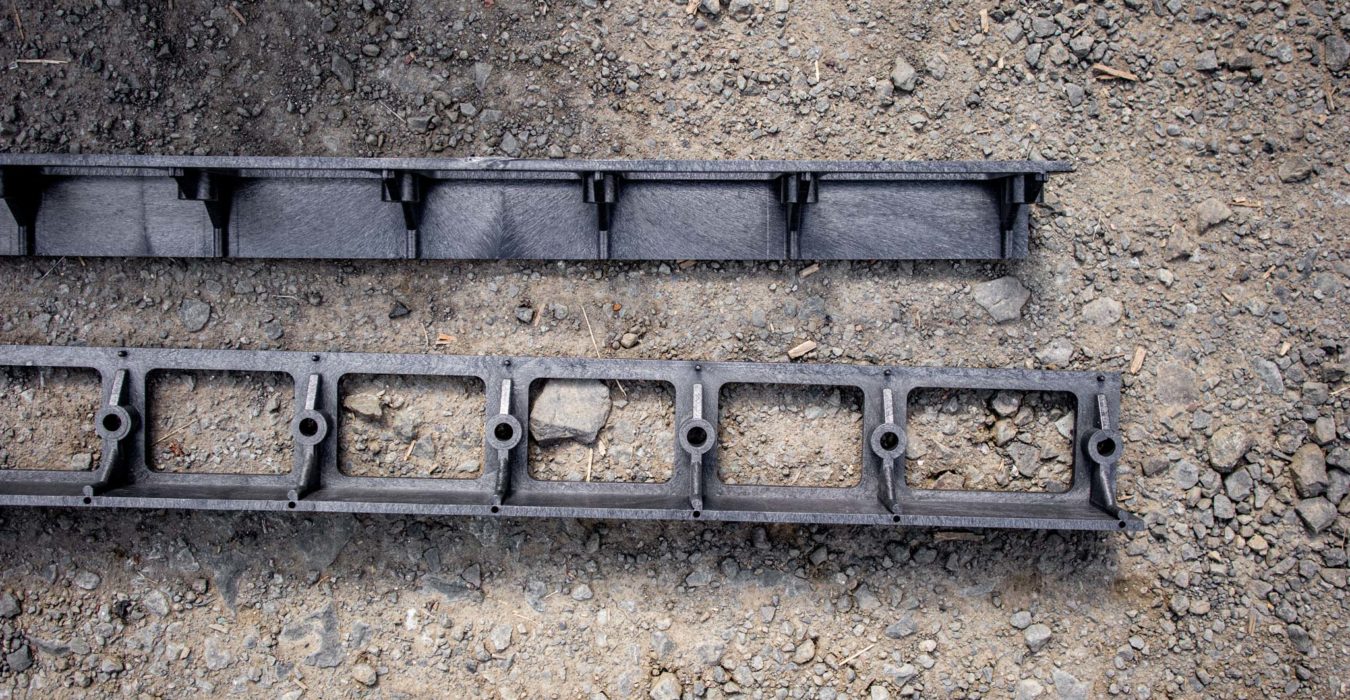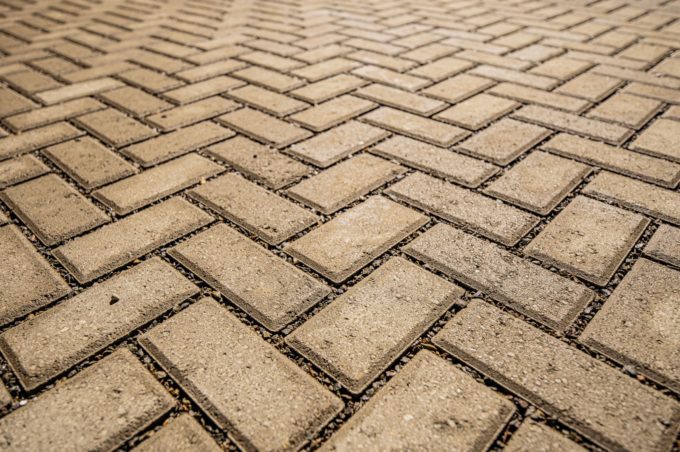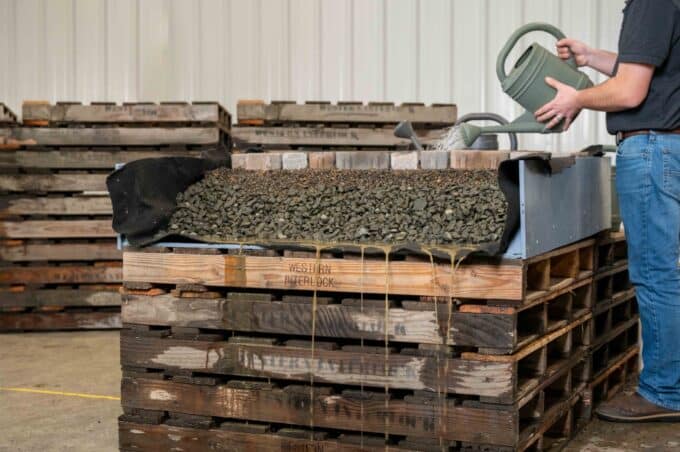Get our FREE Project Planning Guide
"*" indicates required fields
Almost all paver projects require an edge restraint to keep the hardscape structurally sound. Without edge restraint, pavers move, shift, and lose their interlock over time. If you’re starting a paver project, you might be wondering which edge restraint which is better: concrete or plastic?
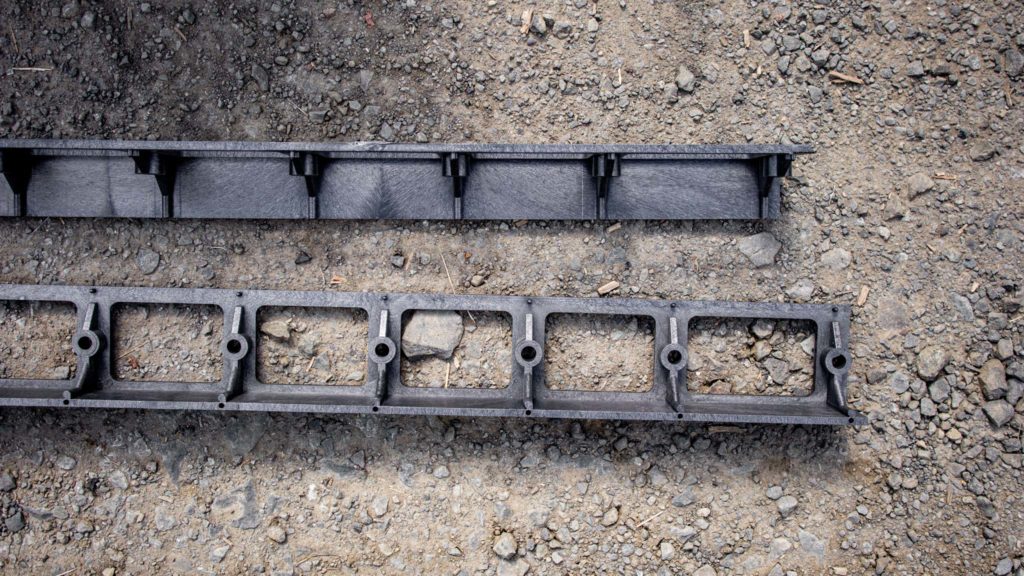
In this article, we will share a recommendation, explaining the pros and cons along the way so you can make an educated decision.
Concrete edge restraint
Concrete edge restraints have been around for decades. For many, this is the edge restraint of choice. Why? Let’s explore a few pros and cons of concrete edge restraint that you should consider.
Pros
Stability
Some argue that concrete restraints are more secure than their plastic counterparts since plastic restraints require metal stakes that can shift around if installed incorrectly. Concrete is rigid, bonds to the earth, and can even be buried for extra stability. It holds up to vehicular traffic when plastic edge restraint won’t.
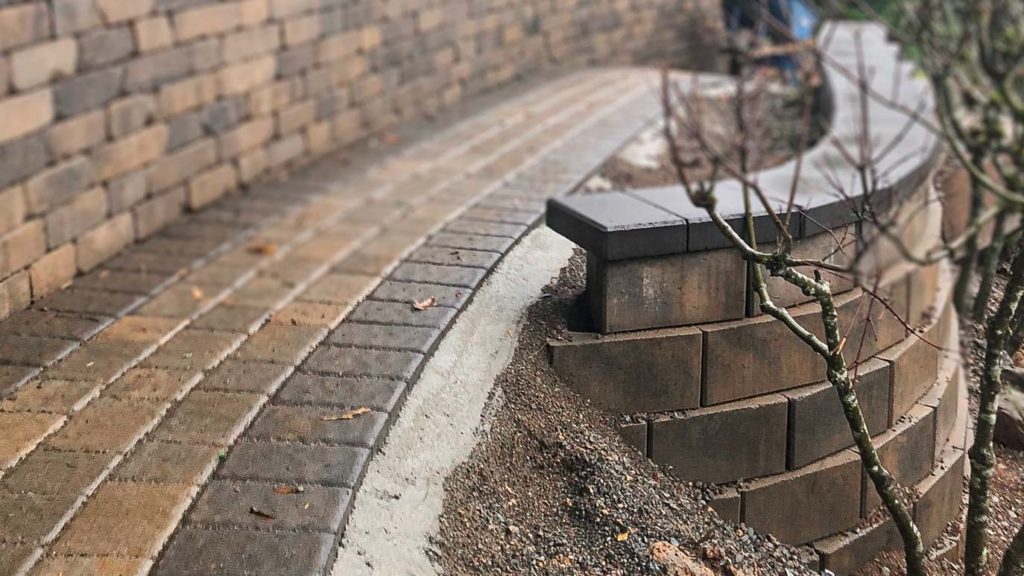
Cost-effective
The second reason many people vouch for concrete is cost. Cost is always something that will be factored into a project and, believe it or not, concrete is cheaper than plastic edge restraint.
Cons
Inflexible
You may be thinking, “Concrete sounds great, why even consider plastic if it’s cheaper and more stable?” However, concrete edge restraint isn’t without flaws. Concrete restraints are not easily as consistent as prefabricated plastic restraints. Human error can lead to thinner and thicker patches of concrete, which can lead to some portions of the hardscape being more secure than others.

Cracking and chipping
Also, concrete is not as conducive to harsh weather climates, such as extremely wet or cold weather. Moisture and temperature fluctuations can cause the concrete to expand and contract to the point of cracking. Concrete can also begin chipping away over time.
Harder to hide
Lastly, concrete is just plain hard to hide. If you are going to use concrete as an edge restraint, you may have to come to terms with seeing either concrete or dirt over the concrete next to your beautiful hardscape.
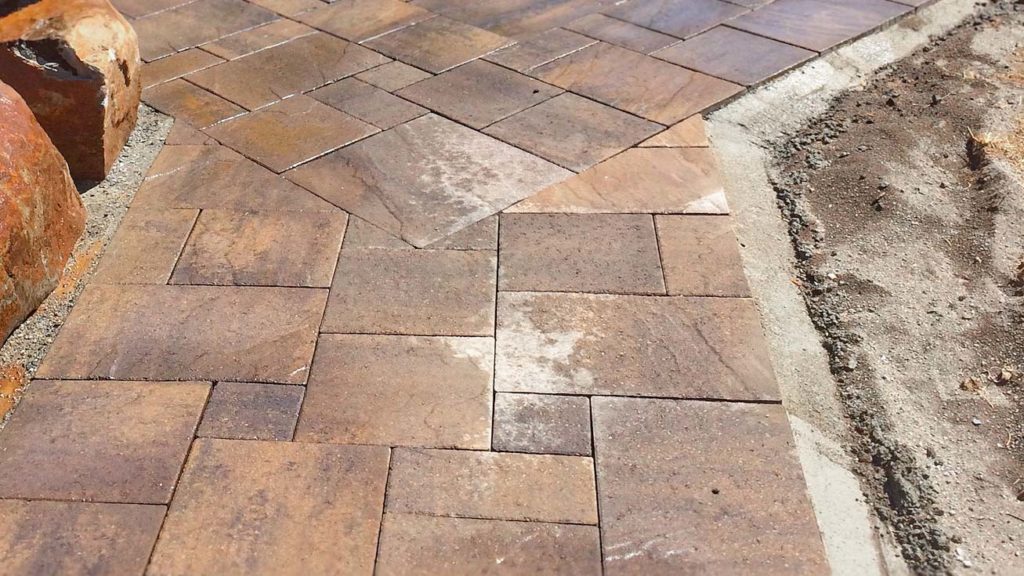
Plastic edge restraint
Plastic edge restraints are now the leading industry standard for hardscape edge restraints and for a good reason. Plastic restraints are mass-produced consistently, giving dependable results.
Pros
Flexible
Plastic edge restraints are flexible, allowing you to use them on both straight and curved hardscapes. This flexibility also enables the restraints to adapt to changes in the ground below.
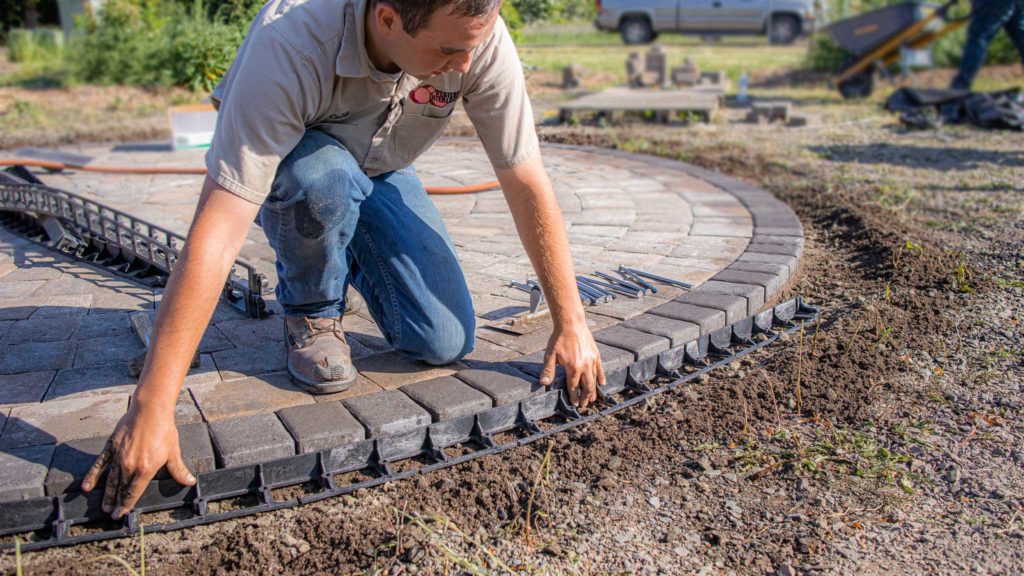
Durable
Also on the pros list for plastic edge restraints is the fact that it can withstand weather, unlike concrete that cracks in weather from expansion and contraction. Plus, if you install plastic edge restraint with non-galvanized spikes, they will rust with water contact and adhere to the dirt, keeping your restraint durable and stable.
Easily hidden
Another reason plastic is dominant over concrete is the fact that plastic can be easily hidden due to its design with gaps between each L bracket. Unlike concrete, you can plant grass that covers the entirety of the restraint.
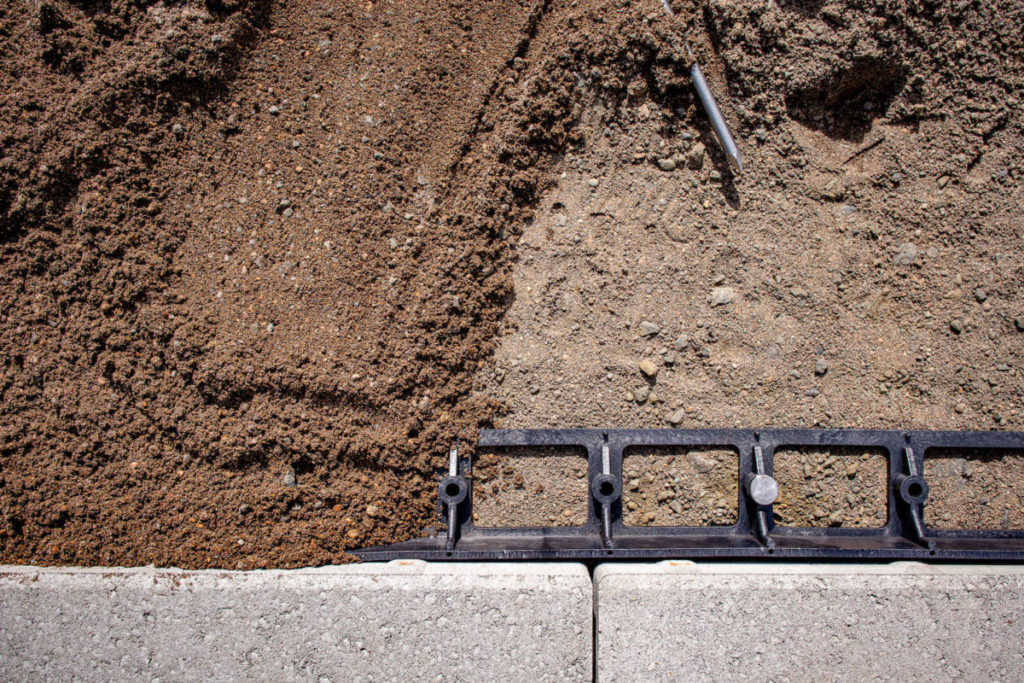
Simple to install
Mixing and pouring concrete perfectly can be intimidating. Plastic edge-restraint, on the other hand, is very straightforward to work with. If you have a hammer, 10” spikes, it’s plug-and-play from there.
Cons
Expensive
The negative side to plastic edge restraints to take into consideration is cost. Plastic edge restraints are more expensive than concrete. However, you are paying for the quality of the material that you are receiving.
What about a bond beam?
There is another edge restraint option other than plastic or concrete called a bond beam. It’s something you don’t see it very often because it’s the most difficult to install. However, it’s the most structurally sound.
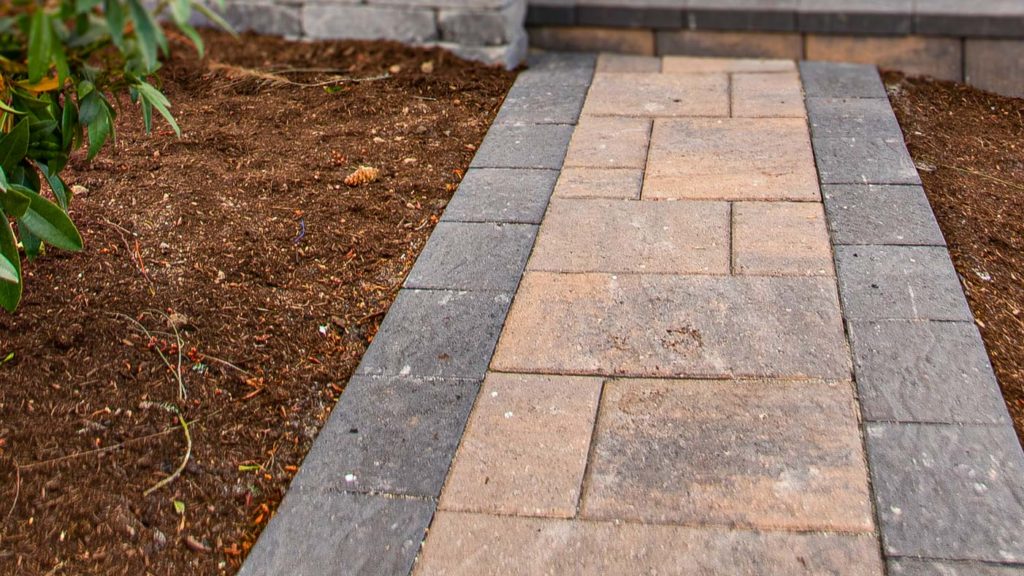
A bond beam is when the hardscape edge or border is literally set in concrete. How this works is simple: you lay your base as usual but, instead of laying your last edge of stones and installing an edge restraint, you pour concrete over your base and set your stones right on top of the concrete. The concrete bonds with the sand and gravel base below and the pavers above. There’s no additional edge restraint required.
The last benefit of the bond beam is that, contrary to a concrete edge restraint, the concrete is not visible at all because it’s hidden under the pavers.
Our edge restraint recommendation
As you can see, there are a handful of factors to consider when choosing edge restraint. At the end of the day, both options are time-tested and tried-and-true. They’re both stable, durable, and somewhat easy-to-hide. You’re not going to go wrong.
However, we recommend a plastic edge restraint for two reasons: it’s flexible and easy to install. At the end of the day, installing pavers is a lot of work and takes a lot of time—and plastic edge restraint makes the job so much easier. Not to mention, using a plastic edge restraint removes the risk of improperly pouring concrete.
If you’re looking for a specific product to use, consider Snap Edge Paver Restraint from SEK Surebond. This is a contractor grade product, designed to be used with pavers or natural stone 2” – 3 1/8” thick. It comes in 8’ pieces with a 1 7/8” back wall height and 2 7/8” wide base. If you go with this option, be sure to pick up 10” non-galvanized landscape spikes as you’ll use them in every third hole in your edge restraint.
Learn how to restrain your hardscape
Now that you are informed of the two main types of edge restraint, you’re ready to put your new knowledge to good use. We put together a step-by-step tutorial on How to Install Hardscape Edge Restraint so you can learn how to install your edge restraint and feel confident you’re doing it the right way.
If this article was helpful, learn more hardscaping tips and tricks with our step-by-step tutorials at DIYwithWI.com.
Get our FREE Project Planning Guide
Tell us where to send it and we’ll email the backyard planning guide to you right away!
"*" indicates required fields


